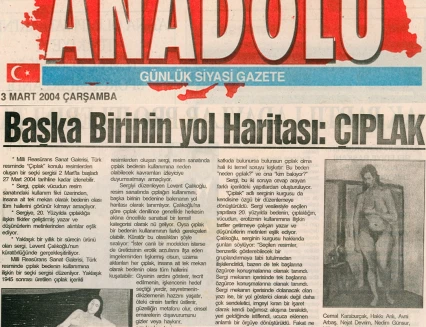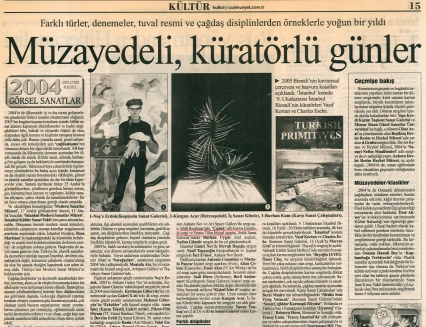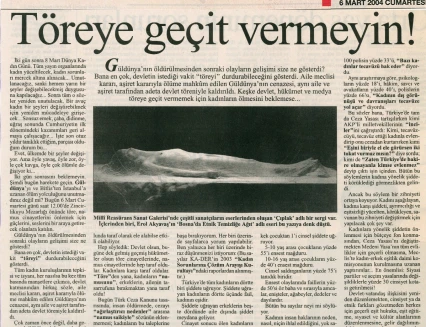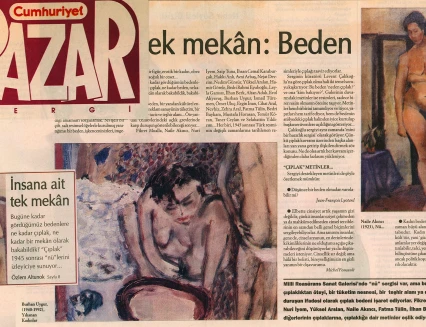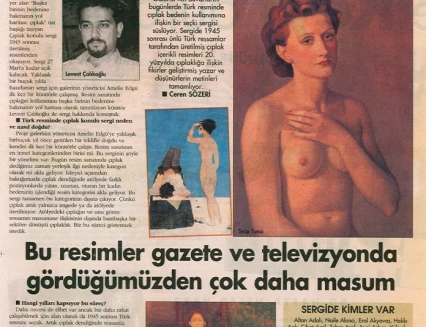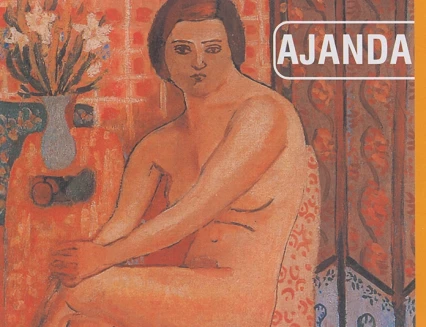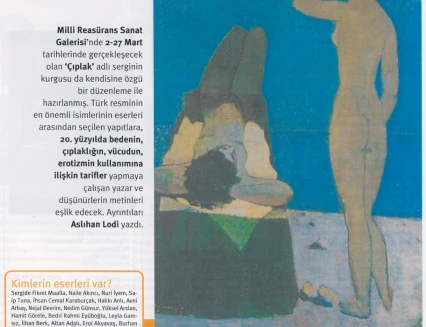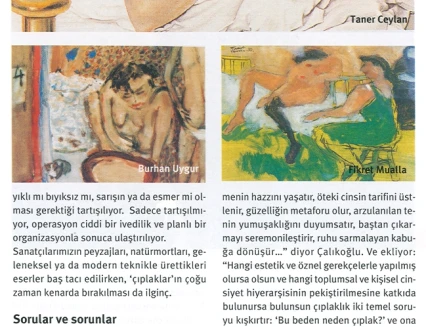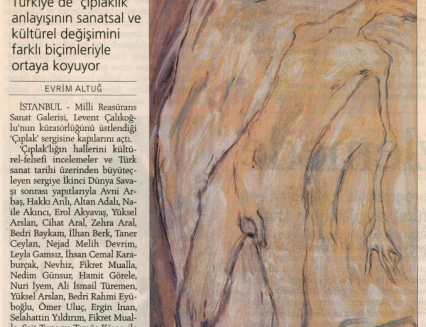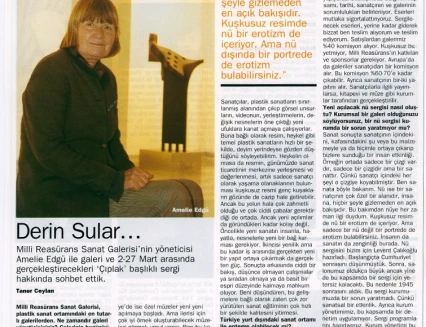The nude: A roadmap to looking at someone else’s body
The Millî Reasürans Art Gallery will be hosting a selection exhibition of paintings on the subject of "The Nude" in Turkish painting between March 2-27, 2004.
The exhibition aims to make visible all possible states of the body as the only space belonging to the human being, through the idea of the use of the naked body in painting.
The exhibition is accompanied by excerpts from the texts of writers and thinkers who developed ideas about nudity in the 20th century.
The exhibition, which is the product of a process of approximately one year, is being curated by Levent Çalıkoğlu.
The Millî Reasürans Art Gallery is organizing a selection exhibition on the use of the naked body in Turkish painting. The exhibition, which consists of paintings with nude content produced approximately after 1945, aims to make the viewer feel the concepts that may lead to the use of the naked body in painting.
Levent Çalıkoğlu, who organized the exhibition, defines the use of the nude in painting as the roadmap for looking at someone else's body. According to Çalıkoğlu, when the word nude is mentioned, the first thing that comes to mind is the nude as a category of artistic representation. However, there may be different reasons for using a naked body. The curator lists these possibilities as follows: “Whether it has emerged from a live model or from the imagination of its producer revealing erotic desires, every nude transferred to space can encompass all possible states of the body as the only space belonging to the human being: It shows what is behind the clothes, it is the target of isolation and torture, it provides the pleasure of watching-peeping, it takes on the description of the other sex, it becomes a metaphor for beauty, it hides or shouts the expression of sexual signs, it makes the softness of the desired skin felt, it ceremonializes seduction, it corresponds to the longing felt for the body of the lover, it turns into a shell that envelops the soul...”
